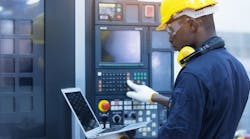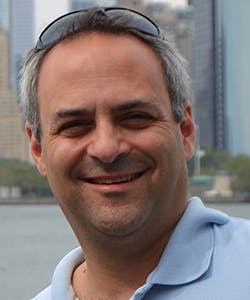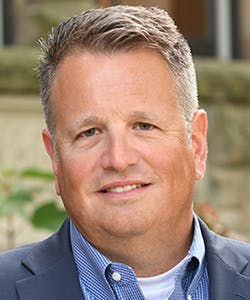The Control System Integrators Association (CSIA) is a global trade association with over 500 member companies in 35 countries that seeks to advance the industry of control system integration. Control system integrators use their engineering, technical and business skills to help manufacturers and others automate their industrial equipment and systems. For this year's System Integrator Roundtable episode, Plant Services editor in chief Thomas Wilk spoke with three veteran system integrator professionals about how the industry is changing and which new technologies are poised to make a big impact. Kurt Wakeman is the business director for Materials Handling group at E Tech Group. Bob Pusateri is director of business development at Electronic Drives and Controls. Sam Hoff is President and CEO of Patti Engineering.
Listen to Kurt Wakeman, Bob Pusateri, and Sam Hoff on The Tool Belt Podcast
I'm struck by the wide variety of different work that we've got here from integrator partners. I mean, it's anything from turning over drives to helping increase automation to cover up resourcing gaps. Bob, if I could check in with you on the second question for the roundtable today, does 2023 to you look different at all from 2022? Do you see new opportunities in the horizon for this year? Or maybe on the distant horizon for next year, or the year after that?
BP: Not too different for us. What does change for us is we tend to go in waves in terms of a particular industry. We'll do a lot of wire and cable one year, and then the next year it will be metals converting, and the next year it'll be processing or something like that. I would say maybe we're going to be working with more OEMs, kind of to Sam's point, trying to do more with less. We’ve become the de facto electrical engineering department and controls department for some OEMs. We don't do a lot of that kind of work, but there are a few people that we know where they are so busy that they ask us to do projects for them, or they just don't have the staff anymore or maybe never did have the staff, and they'll do the mechanicals and then we'll do the electrical part of it and do the startup and make everything work.
So we probably are going to be doing a little bit more of the OEM-type work this year than we have in the past couple. But again, for us it kind of comes in waves depending on which industries are spending money, or sometimes it's just supply chain issues on when you can get products. That's something we're all experiencing obviously, just working through some of that.
PS: Sam, let me turn to you. Do you see differences in the kind of work later this year and next year from the kind of work you've been engaged in?
SH: I think if you take a look at the typical adoption curve on the whole digitalization and all, I think we're really moving from the early adopters to the early majority. People understand that they do need to do digitalization, you're getting less pushback on that, and I think people are really kind of understanding.
I know that our business continually gets more and more consultative in nature, and when we're coming in and we're helping them look at their OEE, look at their data, look at the controls and how that works on it, you invariably get into some industrial and mechanical engineering aspects of the project as well. We've been learning some new tricks on our end and bringing in some proper partners, but it's really growing to a consultative role to our clients. Our goal is to become a trusted advisor to our clients, and you don't do that on day one, you do it through success.
PS: Kurt, let me pose that question to you. Do you see a big change in the kind of work that your team will be doing in 2023 or beyond, versus the last couple of years? Or do you see the same kind of workload increasing?
KW: Yeah, I do think 2023 looks a little different based on some of the economic challenges we've been facing. Customers tend to be investing a little bit more in existing equipment as opposed to buying new systems. They're a little bit tighter with their money and they're investments, so we've seen a big uptick in demand for recontrols, mods and upgrades, IT-OT assessments, things of that nature.
We're also seeing a transition away from PC-based controls to PLC-based controls. A lot of the big OEMs offer the proprietary intellectual property software that comes with lockdown – there's no available source code, and we're seeing customers demanding more open source, agnostic software that can drive consistent visualization, maintainability, regardless of what mechanical equipment is being provided. So recontrols has been a very popular offering that we've pursued in 2023.
Kind of in the same line of that too is that customers are demanding more extensive vendor qualifications including certifications. We put a big investment aside to get our team trained in Rockwell, Siemens, Ignition, AVEVA, to name a few, just to make sure that you know we're going to be competitive as the need is there. That's what I'm seeing.
PS: On the asset management side, what we've noticed is that when it comes certifications, it's always good to get your technicians and managers certified with, say, a CMRP certification if you can. But it's getting more and more difficult for a single plant to staff all the expertise you need. You can't say have a Level II vibration technician and a Level III infrared technician, and so a lot of times you've got to find partners who are qualified in these various specialty areas.
Sam, let's talk about game changing technologies. There are a lot of companies innovating out there. What are one or two technologies that you and the team at Patti Engineering have seen as being game changers for industry lately.
SH: One emerging technology that we've been really using in our tool belt over the last year or two are some of the simulation tools that have always kind of been there, you know, as far as Siemens Process Simulation and Plant Simulation. There's a big difference between a simulation and a digital twin, I always try to tell people this. A simulation is only a model of what your manufacturing system is doing, or your system is doing, or your plant is doing. With a digital twin you actually have to feed the data back from the real world into that simulation, fine tune that simulation so that you get a true digital twin of your system. What that allows you to do once you have a true digital twin is instead of conjecture or experience to say “What can I do to improve this system?” you can actually model your improvements in the digital world before wasting any money actually performing changes in in the real world. We're using a lot of the digital tools that have been used traditionally for design of these systems up front to create the digital twins. That's really been kind of a pretty cool stuff that we've been doing over the last couple years and increasing in doing that.
BP: I was just going to ask Sam if he could elaborate on that, maybe give us a little bit more of an example on how that works, because you hear those buzzwords all the time, and you know it's just more specifically how you put that into action or an application example maybe.
SH: Sure, I'll give you an application example. So we had a client doing machining of engine blocks. Basically they have a line that's feeding all these operations down the line, and the robot picks the part off the main line, a seven-axis robot, delivers it to the CNC machines, and then the CNC machines the part for a couple minutes and the robot comes back and picks it up. So it's feeding five or six different CNC machines at the same time, and they really had throughput issues on one system. What we did is we created a digital model of that. We took the production data off the digital model and fine-tuned it, and that's not easy, right? I mean, one of the things that I think that they do a poor job of is really analyzing and just kind of looking through manufacturing data. But we perfected (things) so that the digital model actually matched the real-world production model. And then what we did was we could run “What If” scenarios on seven different ideas that seven different stakeholders had on how to speed this up, see which one of those seven gave you the most bang for your buck, and then assist the client in implementing those changes. So that's kind of a real-world example of that.
BP: That's great. Thank you.
PS: I can't even imagine how long it would take for seven different rapid prototypes to work without that digital help.
SH: Yeah, exactly. And who knows? You go to do one of them because you say OK, that's it, you know. And we're talking about the changes were anywhere from $250,000 to $1.5 million. Do you want to invest that, or do you want to spend $100,000 or $150,000 on the front end to make sure that you're going to know exactly what the bang for the buck is going to give you.
PS: And for all the asset management specialists out there, you don't even have to touch the actual physical machine and risk introducing new errors to it. It's digital.
SH: Exactly.
KW: Yeah, we use a lot of Emulate3D in our industry to get those presentations to the customer and let them see the visual of what the machines are going to do. They love it.
SH: Yeah, that always helps on the front end, and how can you maintain that digitalization throughout, you know what I mean.
PS: Kurt, let me ask you about technologies that are changing the game in your area of expertise here.
KW: Right. So I was actually in Chicago back in March and I attended the trade show ProMat – ProMat's a big material handling trade show that happens every other year in Chicago – and what I saw was a huge effort to eliminate repetitive tasks and automate manual processes. This could be done through solutions like ASRS (automated storage & retrieval), autonomous robots, automated picking.
There was actually one display that really stood out to me and it was by Exotec and they had a system called a Skypod system. The system is modular, and it has automated storage & retrieval via autonomous robot and the autonomous robot feeds into an automated robot picker. You look at the system and there's literally not one human interacting with the system and orders are being fulfilled. You think about what goes into making this happen, and AI is a big part of it being able to leverage vision systems, historical data, different algorithms, and to optimize moves and navigate obstacles just to be able to operate autonomously. I think that is what is going to change the game in my industry, and probably other industries within automation as well, and you're going to see a lot less people in these buildings.
PS: Ah, that's tremendous. Bob, let's talk to you, what are some innovations in in your neck of the woods.
BP: Well, I think like everybody else, just the ability to send everything to the cloud, right? So, just drilling into the PLC, getting your tags that you want, and taking line parameters and different data points, registers, etc. and putting that into the cloud and contextualizing it. Some will use OEE and those types of metrics, and others just want to look at the raw data, they just want to see trends, they just want a historian. We've been doing a little bit more in that field, and I think it's just such a huge benefit for a lot of people and it's allowed us to go back to some of our existing customers and offer them some additional services.
PS: Let me ask a wrap-up question on sustainability. It's kind of a buzzword, but also I do think we have a sustainable moment that's upon us. I raise this question because at a couple of trade shows, I've seen an increasing number of software providers explaining that they're getting requests from their clients to build out modules record the carbon footprint of operations, and that's going to take a lot of integration work between systems that talk to each other to actually get that data. So I was curious to know, what are you seeing in this area? Are you getting requests for work that way? Are you observing this sustainability is changing the way integrators approach the business?
SH: I'll say this, and I don’t know if you guys may agree with this. I go into facilities all the time and I just see them throwing money down the drain. Whether it's transfer efficiency within their paint systems; whether it's conveyors that are running all night, even while people are home. There's just so many ways that they can save their carbon footprint by just taking a look at the waste in their facility. We're working with some of our clients to figure out how to do that, how to reduce their carbon footprint and help them save money at the same time. As energy costs goes up, this is going to become more and more important to them.
BP: Yeah, I agree, that's what I would say, is there's just so much capacity or opportunity I should say for energy improvements. We do a lot of work in New York City where they have skyscrapers and large campuses and hospitals and things, and believe it or not, there's still a lot of people out there not using variable frequency drives. The relationship between power and speed is cubic for a fan and a pump, so if you can reduce the speed just 10% on a fan or pump, you get almost 30% of the energy reduction. That starts to get close to what you can do with LED lighting.
And then, a lot of the work that we do is because companies have old lines, old equipment that they know are huge energy drains or huge material drains because they're wasting so much product or because maybe a certain section of the of the line requires someone to babysit it where it should just work by itself. Maybe the functionality isn't there, so they want to resurrect that functionality so that they don't need someone to hand-feed something or to poke it with a stick every 5 minutes, whatever you need to do. Those types of improvements drive what you would call sustainability improvements.
KW: I took a little different spin on this question. You know, interestingly, E Tech is part of a big project with the customer that wanted an automated indoor farming solution to grow products such as lettuce, basil, microgreens. They distribute these locally to our grocery store in this area and this customer advertises processes that use 100% renewable energy, 95% less water, and can grow 300 times more food per square foot than traditional farming. So, I think about what are our customers doing? Maybe customers that historically were not in automation, we are now enabling them to get into automation and then also reaping the benefits of the sustainable culture.
PS: Kurt, you're taking me back to a combination I had even in 2019 out in California where someone was doing a digital wine, and making sure that they understood the exact variables – pressure, temperature – that went into the best batches of wine. They were loading the data into the Pi system and trying to reproduce those conditions, so I hear you when you say these technologies would be applied in ways that are all new.




